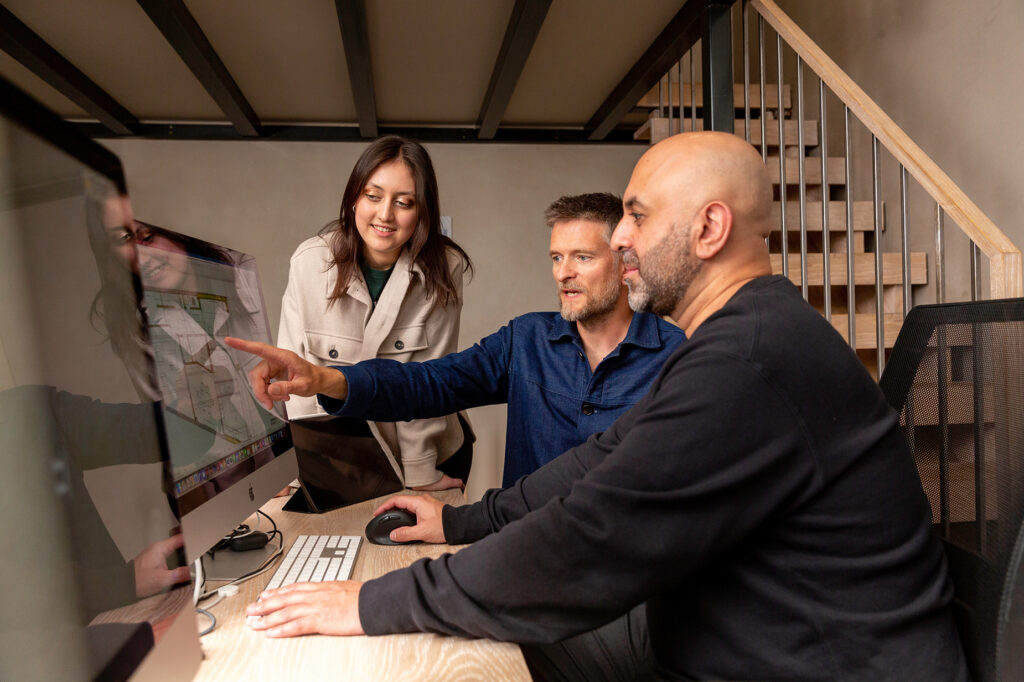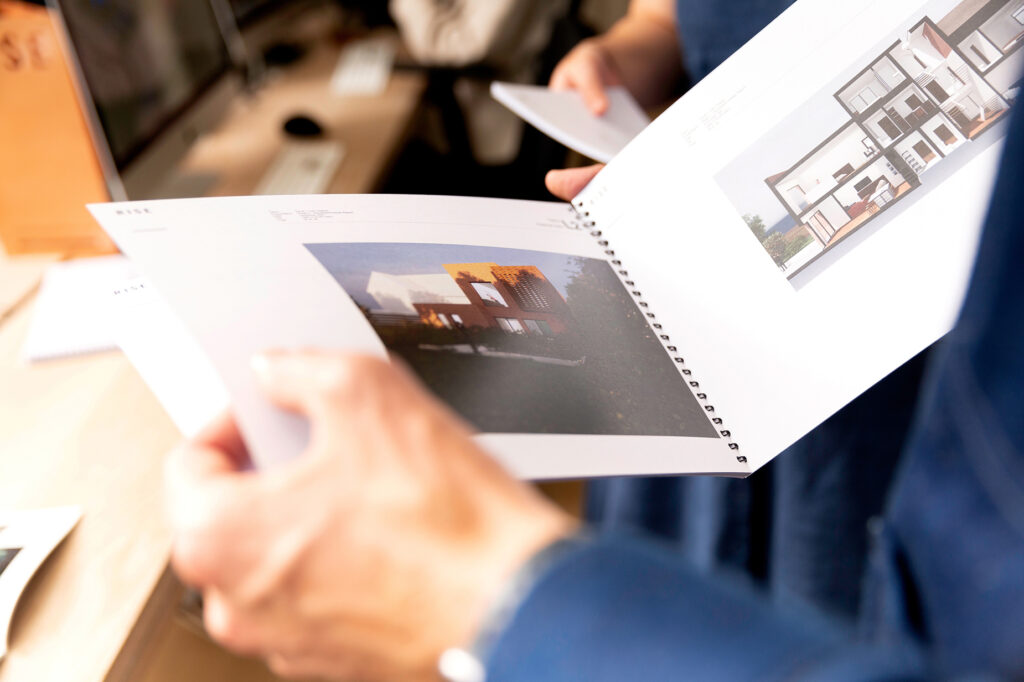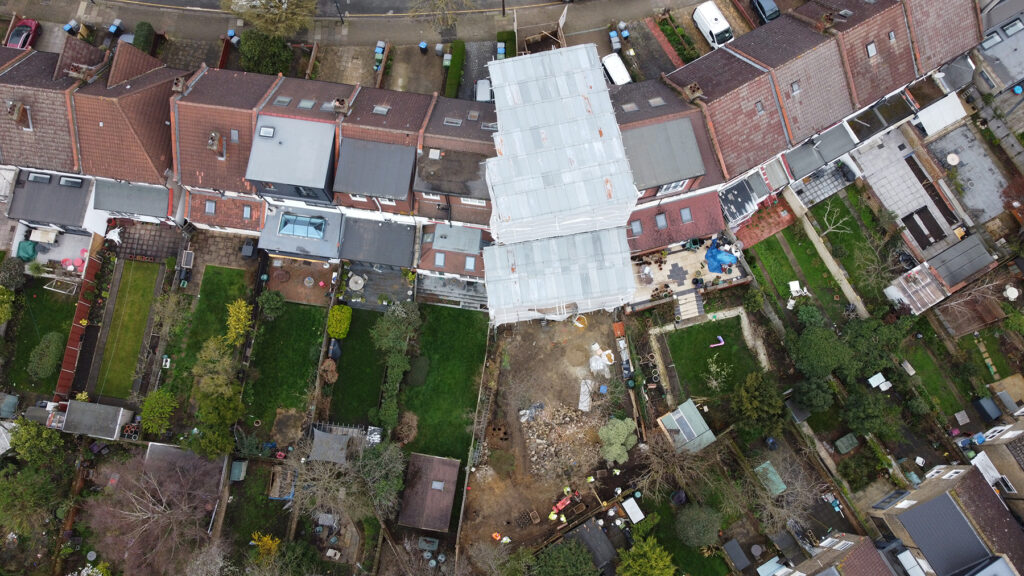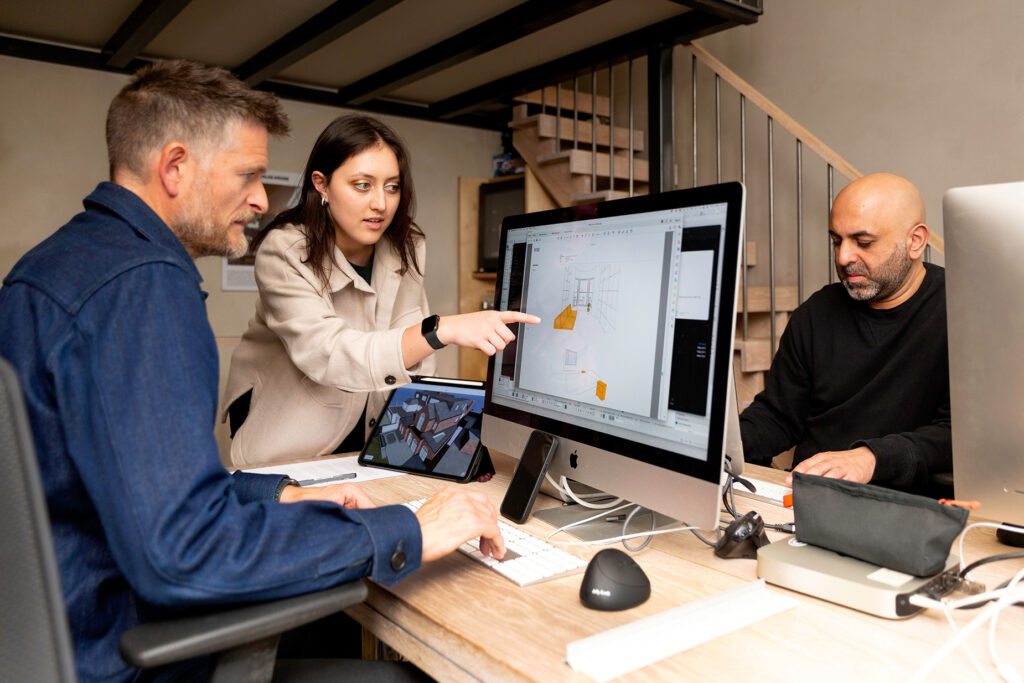As an architect with over 20 years of experience, working in a small contemporary design-led architecture studio focused on low energy and low embodied carbon designs, I am frequently asked about the best approach to construction procurement: traditional procurement or design & build. This is not a question with a single answer, as it truly depends on your building project, and your specific goals and objectives.
In this blog post, we will explore the pros and cons of traditional procurement and design & build, explaining the concepts in plain English. By the end of this article, you will have a clearer understanding of these procurement methods and be able to determine which one is better suited for your project. Let’s dive in!

Understanding Traditional Procurement and Design & Build
Traditional Procurement: When you opt for traditional procurement, you follow a tried and tested approach that has been in use since the Victorian era. Here’s how it works: You appoint a fully qualified architect to design your project, whether it’s a new housing estate, an apartment block, home extension, or loft conversion (we strongly recommend working with a chartered architect for the best results). Once you obtain planning permission, you or your project manager (which could be your architect) invite building contractors to submit bids for the project. These bids outline the contractors’ prices, qualifications, and sometimes their capacity for your specific project. Based on these bids, you choose a contractor, and they commence the construction work according to your architect’s drawings and specifications.
Design & Build: In recent years, design & build has emerged as the main alternative to traditional procurement for developers and individuals commissioning construction projects. With design & build, you hire a building contractor at the project’s outset, often through an invitation to tender. Once hired, the contractor assumes full responsibility for making everything happen, from the initial stages to the final handover. This approach may sound appealing, as it relieves you of many responsibilities. However, as we know, things are rarely as simple as they seem. Let’s take a closer look at the decision you need to make.
Matching Priorities with Procurement Routes
Before making a decision, it’s essential to determine your priorities for the project. What matters most to you? Take a moment to reflect on your key considerations and write them down in order of importance. Throughout this article, refer back to this list as we discuss the merits and drawbacks of traditional procurement and design & build.
Traditional Procurement: When Does It Shine?
If design is near the top of your priority list and you have a strong sense of how your project should look and feel, traditional procurement may be the best choice for you. Traditional procurement allows for collaboration with an architect who can capture your vision and bring your ideas to life. If maintaining control over the design and construction process is important to you, traditional procurement offers distinct advantages. Additionally, if you value attention to detail and want the flexibility to select different professional consultants and specialists, this method also provides the freedom to do so.

Advantages of Traditional Procurement:
- One-to-one relationship with the design team: Working directly with the architects fosters a close collaboration and ensures your vision is accurately translated into the design.
- Retention of control: You have a greater level of control over the project’s direction, allowing you to make decisions aligned with your vision and objectives.
- Flexibility in selecting consultants and specialists: Traditional procurement enables you to choose the best professionals for each aspect of the project, ensuring expertise and specialisation in specific areas.
- Transparency in selecting builders: The tender process allows you to choose builders based on criteria such as price, quality, time to complete the works or a combination of all, tailored to your needs.
- Specific brief for building contractors: With a well-defined brief, the pricing from contractors should be closely aligned with the work required. This is particularly advantageous for complex projects.
Disadvantages of Traditional Procurement:
- Dealing with multiple individuals: Unless you appoint your architect as the project manager, you may need to communicate with various people involved in the process, potentially increasing complexity.
- Uncertainty about costs: Traditional procurement involves separate billing for each project stage, which may lead to less cost predictability compared to a single initial quote. It is possible to have more control over costs with traditional procurement by appointing a Quantity Surveyor (Cost Consultant).
- Time delays in the tender process: Waiting until you obtain planning permission before initiating the tender process can extend the overall project timeline. Although it is possible to work at risk and complete the technical package of information (used to tender your project) in parallel to the planning determination period (which is normally 8 weeks).
Design & Build: When Is It Ideal?
Design & build has gained popularity as an alternative to traditional procurement, particularly for projects with cost and timing as the top priorities. If your project is fairly straightforward without hidden surprises and you aim for greater cost certainty, design & build might be the right approach. This method streamlines the responsibility by placing it entirely on the contractor, allowing for potentially quicker project completion.
Advantages of Design & Build:
- Single entity responsible for project delivery: With design & build, one company takes full responsibility for delivering your project, simplifying communication and coordination.
- Greater cost certainty: While it’s important to note that unexpected events can impact the budget, design & build offers a clearer understanding of project costs compared to traditional procurement.
- Simultaneous planning and construction: The design and construction processes can run concurrently, allowing the contractor to start on-site as soon as planning permission and building regulations approval are granted, potentially accelerating project initiation.
- Improved buildability: Advocates of design & build argue that involving building contractors in the design process enhances “buildability.” Contractors often prioritise practicality, requesting designs that utilise standard, easy-to-assemble elements.
Disadvantages of Design & Build:
- Reduced control over project outcome: While design & build relieves you of many responsibilities, it also means relinquishing control over decision-making. It’s essential to trust that the contractor will execute the project in alignment with your vision.
- Potential compromises in quality: Contractors may attempt to stick to their original quote, but they also need to make a profit. If faced with delays or unexpected costs, the contractor may be incentivised to compromise on quality, either in material selection or attention to detail and with no oversight this is difficult to control.
- Lack of flexibility and adaptability: Design & build contracts typically lock in the project’s nature from the start, leaving less room for evolution or adjustments. Significant changes requested by the planning authority can disrupt the advantages of design & build.
- Limited contractor options: The number of building contractors experienced in full design & build services may be limited, reducing your range of choices and potentially leading to compromises in contractor selection.

Introducing Develop & Construct: A Hybrid Solution
You may be wondering if there’s a way to combine the advantages of traditional procurement and design & build while mitigating their disadvantages. Hybrid systems, such as “develop & construct,” offer that promise. With develop & construct, you appoint an architect to provide a design concept. Before submitting the planning application, you commission a contractor to design and build based on that design. However, it’s important to consider whether you trust the contractor’s designers to faithfully execute your architect’s vision. Collaboration between the contractors and the original architects can help develop the design, but the contractors ultimately make the decisions.
Which Procurement Method Should You Choose?
It’s important to acknowledge that most of the time, trade-offs are necessary when choosing a procurement route. For example, if you desire bespoke craftsmanship, it will naturally extend the project timeline compared to using mass-produced elements. You must weigh your priorities carefully, as the fastest build and the most meticulously crafted project are seldom synonymous.
At our studio, we generally lean towards recommending the traditional procurement route. However, we recognise that design & build can be suitable for projects that are fairly straightforward, cost-sensitive, and under £100,000 in total. For all other projects, where achieving a high level of design excellence, intrinsic beauty, or contributing to the prestige and reputation of your business is important, the traditional procurement method is likely the better bet.

How RISE Design Studio Can Help You
At RISE Design Studio, a London-based RIBA chartered architecture and planning practice, we understand the complexities of construction procurement. With our focus on low energy and low embodied carbon designs, we are committed to delivering sustainable and environmentally conscious architecture. Our expertise lies in residential extensions, conversions, restaurants, cinemas, schools and new build homes. We work closely with homeowners, landowners, end users and developers, helping them achieve ROI-focused results.
If you’re seeking a dedicated team that embraces a transparent and collaborative approach, ensuring that you have all the information necessary to make informed decisions about your construction project, contact us today to discuss your project requirements and discover how we can contribute to your vision.
In conclusion, the choice between traditional procurement and design & build depends on your specific goals and priorities. By understanding the pros and cons of each approach and aligning them with your project requirements, you can make an informed decision. At RISE Design Studio, we are here to guide you through the process, delivering sustainable and aesthetically pleasing results that align with your vision and values.
If you would like to talk through your project with the team, please do get in touch at mail@risedesignstudio.co.uk or give us a call on 020 3290 1003
RISE Design Studio Architects company reg no: 08129708 VAT no: GB158316403 © RISE Design Studio. Trading since 2011.
